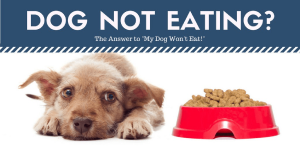So, it happened again. Your dog keeps throwing up, and you’ve gone through all stages of accepting the situation. At first, you denied that the problem existed. Then, you were angry and thought if only you had taken the dog’s nutrition seriously, that would have never happened. After that, you found yourself upset that both of you have to live through this issue. And, finally, you have accepted the problem and are ready to embark on it.
You probably know that dog vomiting can be triggered by many factors from eating garbage or spoiled food to some health issues. But no matter what, you can’t stand to see how your furry friend suffers. In this article, you’ll get to know the reasons for vomiting in dogs. You’ll also learn how to detect the warning signs showing that something serious is happening to your canine.
Vomiting or Regurgitating: What’s the Difference?

An experienced dog owner or a vet will easily detect whether the pet vomits or has dog regurgitation since these are two different things, even though they might look similar.
Becky Lundgren, the veterinarian, explains that during vomiting, the content of the stomach or upper intestine goes out. The material might look different depending on what has been eaten before. However, it will look digestible or partially digestible with a great amount of fluid. Dog vomit can be spotted by excessive drooling, licking lips, rumbling sounds in the stomach, and so on.
Regurgitation in dogs happens when food, water, or any other material is burped up from the esophagus, the tube that connects the mouth and stomach. Usually, the dog throws up undigested food since it has never reached the pet’s stomach. There might be slight coughing or gagging as the material moves up, which frequently happens shortly after the meal.
Why Is My Dog Throwing Up: 4 Basic Reasons
As you gave your pooch cuddles and cleaned the carpet, it’s time to think of what made your dog throw up. First of all, you’ve got to understand that vomiting is an attempt of the dog’s body to protect itself from any threat. This process might be triggered by temporary factors like spoiled food or some serious conditions that include bilious vomiting syndrome or other health conditions.
When deciding what causes dogs to throw up, we would recommend you to put all the emotions aside and think critically. Here are some of the tips for you.
Change in Diet
Not all dog foods are created equal. Some recipes might include ingredients your canine just can’t tolerate. These ingredients include grains, gluten, corn, wheat, soy, and others. Perhaps, your furry friend is allergic to chicken, salmon, eggs, or other ingredients in a new diet. Dogs throw up food if you fail to introduce new dry dog food for large breeds gradually and make an instant transition.
Eating Spoiled Food
Dogs are notorious eaters of stuff humans won’t even look at. They don’t mind gulping in spoiled leftovers of your dinner or getting some “treats” from the trash. Kibble or wet puppy food can be simply expired, which can lead to the puppy throwing up. Because bad food can be packed with bacteria and other toxic stuff, owners will notice their dogs throwing up and diarrhea after finishing the bowl of spoiled dog food.
Gastritis
If your dog throwing up multiple times regularly (that is once or twice a week), gastritis might be the reason for vomiting. It happens when there is an inflammation of the stomach lining, so you can't define the diagnosis by yourself. So, if you notice your dog throwing up food (sometimes even with flecks of blood in the material), having diarrhea, and black stool, get a vet appointment to get the course of treatment for your dog.
Pancreatitis
If your dog keeps vomiting, it might be suffering from pancreatitis. This is an inflammation of the pancreas, the essential organ which is responsible for regulating blood sugar and glucose metabolism. Along with throwing up food, you’ll notice a decrease in appetite, diarrhea, fever, lethargy, abdominal (stomach) pain, and some more. This is a serious health condition, and we insist you go to the vet if you see any of these symptoms to get the treatment for your pooch.
Age
When your puppy consumes mother’s milk only, no issues with tummy are likely to happen. But once it’s time for weaning, you can find your puppy vomiting. It happens because you are either doing it too early or introducing the wrong food. Also, as dogs age, they tend to develop a long list of diseases that might lead to throwing up food. In this case, you should consider an age-specific diet like senior dog food for a sensitive stomach.
When You Should Be Concerned About Your Dog Throwing Up

Defining whether you can deal with dog vomiting on your own or you should take your pet to the vet is probably the trickiest thing. But your request for “vomiting in dogs when to worry” will be satisfied here.
In most cases, you should not bother your vet because of a random episode of throwing up. It’s better to monitor the pet’s behavior if your canine has been vomiting for less than 12 hours for other symptoms before taking them to the veterinarian.
Before you head to the pet clinic, you can help your dog by doing these simple things.
- Take water and food bowls away so as not to trigger sequential vomiting attacks by allowing food to get to the dog’s stomach for at least 12 hours.
- Before you clean the vomiting material, take a closer look at it as it might help indicate what’s going on with your canine. Pay attention to the shape, color, and nature of the vomitus.
- Track if there are any other symptoms and how your pooch is acting.
If your dog’s behavior hasn’t changed dramatically and there were no repeated cases of throwing up, reintroduce water and small amounts of easily digested food like stewed chicken and white rice.
As you see that your dog throws up immediately after eating several times, there is no room for managing dog vomiting at home. If your pooch throws up multiple times within 24 hours and shows other symptoms, it’s time to see a vet. The list of symptoms include:
- Diarrhea
- Loss of appetite
- Blood in stool or vomitus
- Increased drooling
- Shows any signs of dehydration
- Vomiting material contains a foreign object(s)
- Abdominal pain
- Change in the amount of water consumption
If you have any doubts and are not sure whether it’s a serious problem or just a one-time issue, it’s always better to get some pieces of advice from experts who will easily define the cause and recommend treatment for your pet.
FAQs
If your adult dog or puppy throwing up food shortly after eating, most likely, it’s a sign of regurgitating. It occurs if the dog eats too fast or can be a symptom of other diseases.
It’s better to see the vet and get a medical prescription if any is required. Most likely, you’ll be offered to introduce bland food, which includes boiled chicken and white rice.
If your canine won’t stop vomiting within 24 hours, have blood in vomitus, or you see other symptoms which might be related to other diseases, you’d better take your pet to the veterinarian.
Withhold from feeding your canine to avoid any sequential vomiting reactions. However, keep in mind that the treatment might involve more than a bland diet and higher water intakes depending on the origin of the tummy issue.
Related articles



What else do you want to learn?








